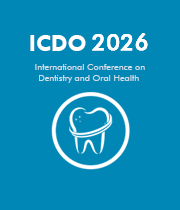Oral Cavity
Oral cavity is an important anatomical structure which serves multiple vital functions such as speech, respiration, deglutition, mastication, digestion of food, and sensory perception. It is primarily composed of oral mucosa covered over the bony and cartilaginous components. It is an important part of dental science as it is responsible for diseases of the teeth, gums and periodontal tissues. The oral cavity has a length of about 9 cm from the front teeth to the anterior tonsillar pillar. The depth of the cavity varies from 2 cm behind the incisors to 7 cm at the posterior tonsillar pillars. The width of the cavity is widest at the molar teeth. It is widest at the occlusal plate and narrows down from the molars to the anterior teeth. The oral cavity has a soft and a hard mucosa. The soft tissue covers the hard palate and uvula, lateral borders of the tongue and posterior aspect of the oral cavity. On the contrary, the hard tissue includes the hard palate, alveolar ridges, alveolar processes, floor of the mouth and dorsal surface of the tongue. The intraoral structures of the oral cavity include the anterior two-third portion of the tongue, buccal mucosa, gingivae, hard and soft palate, dental arches, cheeks and floor of the mouth. The labial and buccal mucosa, which lines the inner surface of the cheeks, teeth, maxilla and mandible, is a major contributor to the oral environment. The gingivae are the semi-circular folds of tissue which line the cervical region of the teeth. The teeth are embedded within the alveolar process of the jaw bones, the maxilla and mandible. Along with its important role in the maintenance of general health, oral cavity helps in the diagnosis and treatment of many dental diseases. It is the site of many common dental diseases such as caries, gingivitis, periodontitis, tooth erosion, and oral cancer. Thus, maintaining a healthy oral cavity is critical for an individual’s oral health and general wellbeing.

David Geoffrey Gillam
Queen Mary University of London, United Kingdom
Christopher Turner
Spacemark Dental, United Kingdom




Title : Evaluating hygienist follow up for head and neck oncology patients in secondary care: Results from a two cycle audit
Peter Basta, Newcastle Dental Hospital, United Kingdom
Title : Atypical facial pain unravelled
Christopher Turner, Spacemark Dental, United Kingdom
Title : New treatment of temporomandibular disorder through muscle balance and muscle regeneration by activation of quiescent muscle stem cells( satellite cells) with mitochondrial dynamics
Ki Ji Lee, National Reserach Foundation & Busan Medical University, Korea, Republic of
Title : Cutaneous, Cranial, skeletal and dental defects in patients with Goltz syndrome
Ali Al Kaissi, National Ilizarov Medical Research Center for Traumatology and Orthopaedics, Russian Federation
Title : The nature and management of dental erosion in patients with bulimia nervosa
Maya Fahy, The Royal Victoria, School of Dentistry, United Kingdom
Title : A systematic review on the early detection of oral cancer using artificial intelligence and electronic tongue technology
Maryam, Kardan Dental Clinic, Iran (Islamic Republic of)